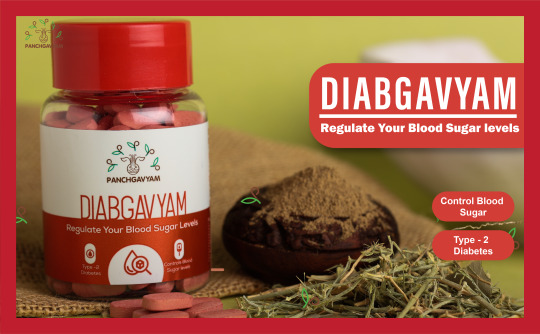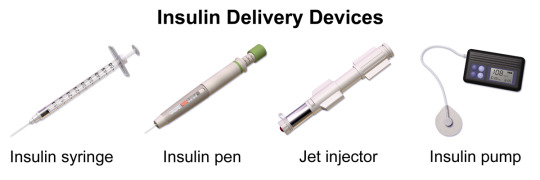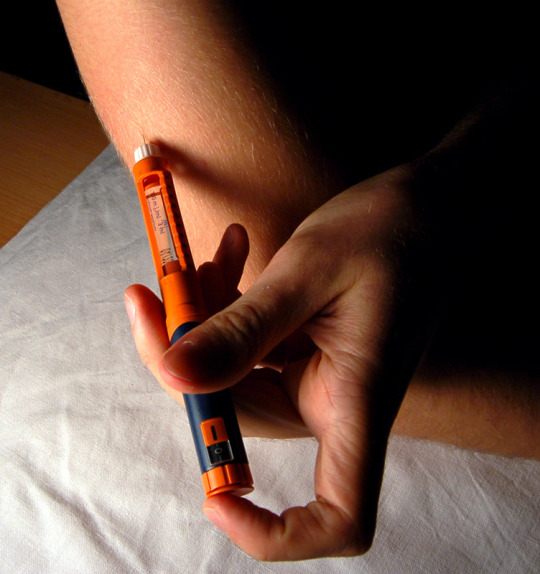#Type 2 Diabetes Medicine
Explore tagged Tumblr posts
Text
A new treatment combining ReCET and semaglutide could eliminate the need for insulin in type 2 diabetes, with 86% of participants in a study no longer requiring insulin therapy. The treatment was safe and well-tolerated, and further trials are planned to confirm these results.
Groundbreaking research presented at UEG Week 2024 introduces a promising new treatment approach for type 2 diabetes (T2D) that has the potential to greatly reduce or even eliminate the need for insulin therapy.
This innovative approach, which combines a novel procedure known as ReCET (Re-Cellularization via Electroporation Therapy) with semaglutide, resulted in the elimination of insulin therapy for 86% of patients.
Globally, T2D affects 422 million people... While insulin therapy is commonly used to manage blood sugar levels in T2D patients, it can result in side effects... and further complicate diabetes management. [Note: Also very importantly it's fucking bankrupting people who need it!!] A need therefore exists for alternative treatment strategies.
Study Design and Outcomes
The first-in-human study included 14 participants aged 28 to 75 years, with body mass indices ranging from 24 to 40 kg/m². Each participant underwent the ReCET procedure under deep sedation, a treatment intended to improve the body’s sensitivity to its own insulin. Following the procedure, participants adhered to a two-week isocaloric liquid diet, after which semaglutide was gradually titrated up to 1mg/week.
Remarkably, at the 6- and 12-month follow-up, 86% of participants (12 out of 14) no longer required insulin therapy, and this success continued through the 24-month follow-up. In these cases, all patients maintained glycaemic control, with HbA1c levels remaining below 7.5%.
Tolerability and Safety
The maximum dose of semaglutide was well-tolerated by 93% of participants, one individual could not increase to the maximum dose due to nausea. All patients successfully completed the ReCET procedure, and no serious adverse effects were reported.
Dr Celine Busch, lead author of the study, commented, “These findings are very encouraging, suggesting that ReCET is a safe and feasible procedure that, when combined with semaglutide, can effectively eliminate the need for insulin therapy.”
“Unlike drug therapy, which requires daily medication adherence, ReCET is compliance-free [meaning: you don't have to take it every day], addressing the critical issue of ongoing patient adherence in the management of T2D. In addition, the treatment is disease-modifying: it improves the patient’s sensitivity to their own (endogenous) insulin, tackling the root cause of the disease, as opposed to currently available drug therapies, that are at best disease-controlling.”
Looking ahead, the researchers plan to conduct larger randomized controlled trials to further validate these findings. Dr. Busch added, “We are currently conducting the EMINENT-2 trial with the same inclusion and exclusion criteria and administration of semaglutide, but with either a sham procedure or ReCET. This study will also include mechanistic assessments to evaluate the underlying mechanism of ReCET.”
-via SciTechDaily, October 17, 2024
--
Note: If it works even half as well as suggested, this could free so many people from the burden of the ongoing ridiculous cost of insulin. Pharma companies that make insulin can go choke (hopefully).
#would be super interested to hear from people with expertise in the area about how this sounds#obviously it's a small sample size#but they're going to do more trials#and LOOK at that effectiveness rate#insulin#diabetes#healthcare#medicine#diabetic#type 2 diabetes#public health#medical news#good news#hope
3K notes
·
View notes
Text

Introduction to Diabetes and Types
Studies have shown that India ranks second after China in the global diabetes epidemic, with 77 million people with diabetes. Of these, 12.1 million are aged >65 years, which is estimated to increase to 27.5 million in the year 2045. There are two most common types of diabetes: Type 1 diabetes and Type 2 diabetes
With Type 1 diabetes, the body stops producing insulin as the insulin-producing cells in the pancreas are destroyed. In this condition, a person must take insulin injections daily to regulate blood glucose levels.
Type 2 diabetes is a serious disease where your body may not respond to insulin, or the body makes insulin but not enough or does not use it well, and thus the sugar levels could go haywire. Thus, sugar steadily builds up in the blood, eventually leading to the blood vessels hardening, causing heart attacks, kidney failure, and stroke.
What are the risk factors for type 2 diabetes?
Risk factors that can increase diabetes include
obesity and a sedentary lifestyle,
uncontrolled blood glucose synthesis in the liver,
hereditary causes
Dysfunctional beta-cell in the pancreas
What are the symptoms of Type 2 diabetes?
You may have diabetes if you have
Blooded vision
Frequent urination
Increased hunger
Slowed healing of wounds, red, swollen, tender gums, and
Tingling hands and feet. If you experience such symptoms, consult your doctor immediately.
What are the complications of Type 2 Diabetes?
Long-term untreated diabetes affects the nerve, kidneys, heart, and eyes.
Nerve damage: Diabetes damages the nerves in the legs and arms. These cause numbness, pain, and tingling that start with the fingers and toes and spread along the legs. If this is left untreated, a person can lose all sense of feeling. Diabetic neuropathy is a family of progressive nerve disorders.
Kidney damage: Long-term uncontrolled blood sugar leads to kidney failure that requires dialysis or a kidney transplant.
Heart and blood vessels: For people with diabetes, who have high blood glucose cause blood vessels in the body to become damaged; when this happens, plaque can form in the blood vessels, making it difficult for the blood to flow.
Eye damage: Diabetes, if left untreated, can damage the retina of the eyes, which may lead to blindness.
Nutrients and vitamins:
Diabetic patients tend to have less nutrient absorption for vitamins like Vit C, D3, calcium, and Vit, herbs. Defective insulin secretion and insulin sensitivity cause metabolic disorders.
Ayurvedic Approach for Type 2 Diabetes
In Ayurveda, diabetes is described as ‘Madhumeha’. Diabetes mellitus is described as Vaat Pramehaand Diabetes insipidus is described as Kaph Prameha
According to Ayurveda, imbalances of kaph dosh, pitt dosh together with vaat dosh are the main cause of Madumeha. Vaat, kaph, and Pitt block the pathways connected to the mamsa (muscle) and meda (fat) tissues.
Eating too much, not exercising, being overweight—all these factors aggravate the vaat dosh of the body, where the body does not make enough insulin or does not use it well, and that leads to diabetes.
Ayurveda suggests Jamun and its seeds are highly effective herbs against diabetes. Known as jamboline and jambosine, the fruit seeds slow down the release of sugar into the bloodstream and increase insulin levels. Diabetes symptoms such as frequent urination and thrusting can be reduced with it since it converts starch into energy. In addition to reducing serum glucose levels and insulin resistance, the herb also reduces dyslipidemia and enhances the function of B cells. As a result, the herb rejuvenates the pancreatic cells at the cellular level.
What is the Treatment for Type 2 Diabetes?
Treatment of type 2 diabetes focus on the combination of diet and lifestyle changes along with medicines.
Lifestyle changes: Yoga has shown to be a great option in the treatment of diabetes. Regularly practising yoga can help to control blood sugar and increase insulin sensitivity in the cells. In addition to helping reduce blood sugar, yoga benefits by reducing stress levels and reducing the risk of heart problems by protecting cardiac health. Regular yoga helps to improve nerve function and boost metabolism, thereby improving nerve health.
Diet changes: It is recommended to consume low-fat foods, avoid any dairy-based products, and incorporate certain foods, such as bitter ground, Bengal gram, and fenugreek seeds, to control blood sugar.
Blood sugar monitoring: Regular blood sugar monitoring is beneficial in the treatment of type 2 diabetes.
Medication:
Although it is now one of the most common yet challenging health issues that people face, a rooted approach plus modern technology provide Meta medicine in the form of DiabGavyam, which is effective and consists of some of the best herbs for the treatment of type 2 diabetes.
DiabGavyam activates the pancreas, stimulates the secretion of a balanced amount of insulin, and regulates the metabolism of carbohydrates. The formulation is blended with the herbs Jamun Beej, and Madhunashak that protect the nerve cells in the retina, thus fortifying the blood vessel, and promoting blood circulation, thus lowering the chance of diabetic retinopathy.
While medicine helps in the control of blood sugar; it does not have any side effects after taking a tablet. You can take 1 or 2 tablets twice a day or as directed by your physician.

#Control Blood sugar Medicine#Type 2 Diabetes Medicine#Diabetes Supplement#DiabGavyam#Diabetes Controller#Glucose Controller#Insulin Booster
0 notes
Text
mann im going to get my blood reports tomorrow and im lwk scared
#mostly it's fine but i looked up this medicine the doc prescribrd me and she said it's for weight loss#but i looked it up and everywhere it said it's for type 2 diabetes#to control blood sugar levels when it's so wildly out of control that nothing is fixing it#why would she give me that??? i mean im obviously gonna ask but tab tak ki anxiety bhai#i have barely processed the fact that pcod is a chronic illness which means im going to have it forever im mostly avoiding thinking about#it cause it feels too big and unbearable#diabetes would be fucking wild man im 21 years old#i am doing so terrible in not turning out to be like my dad lol i want to cry#i just hate hate hate this so much#like i was trying really fucking hard but depression wasn't getting fixed and i kept eating sleeping being in bed all day#like how can one illness cause another be frr man give me a break 😭#and i cannot even officially say depression i just sorta googled thr symptoms and relate to them most days but not everyday#so like#what is all this for#ugh goodnight i hope i wake up and it's all alright#i don't want to be a calorie counting sweet avoiding freak i love chocolate
17 notes
·
View notes
Text
A drug commonly used to treat type 2 diabetes could also effectively protect against colorectal cancer (CRC), based on a new analysis by researchers in the US. The drug in question is a class of medications known as glucagon-like peptide-1 receptor agonists – more easily referred to as GLP-1 RAs. These medications, which include the widely-known 'wonder drug' sold under the commercial name Wegovy, have also previously been linked to weight loss and reducing the risk of cardiovascular problems.
Continue Reading.
76 notes
·
View notes
Text
I hope all of the people using Ozempic and Mounjaro to lose weight without a perscription and the celebrities having fucking "Ozempic and Mounjaro Parties" are enjoying it because I (a person who actually needs it for diabetes management and has a perscription) am about to miss my 3rd week of shots because I've called 3 pharmiacies and not a single one has it.
#weight loss tw#weight loss mention#medicine tw#medicine mention#mounjaro#ozempic#type 2 diabetes#type 2 diabetic#im gonna fucking scream#im insulin resistant so my brain doesn't tell me im full without having my mounjaro and its fucking infuriating
13 notes
·
View notes
Text

Insulin (medication)
#insulin#insulin delivery devices#wikipedia#wikipedia pictures#medicine#medcore#medicalcore#medicore#medical#tech#technology#techcore#technologycore#medical devices#diabetes mellitus#type 1 diabetes#type 2 diabetes#diabetes#insulin pump#insulin pen#insulin injection#syringe#jet injector
88 notes
·
View notes
Text
New Diabetes Cure 😲
🔥 The Blood Sugar Breakthrough Everyone’s Talking About! 💡 Say goodbye to restrictions and hello to freedom. This 14-second trick is changing how people manage their blood sugar—no meds, no endless diets, just RESULTS. ✨ What makes it different? ✅ It’s natural, effortless, and doctor-approved. ✅ It tackles the real problem, not just symptoms. ✅ You can enjoy the foods you love without guilt! 🎥 Don’t wait—watch the video NOW before it’s gone forever! 👇 Transform Your Health Today! 👇 https://www.vitaliswell.com/native

#healthcare#diabetes#diabetic#insulin#type 2 diabetes#health#blood sugar#health and wellness#healthylifestyle#medicine#supplements#wellbeing#physical health#type 1 diabetes#type 1 diabetic#diabetologist
2 notes
·
View notes
Text
#diabetes#diabetic#type 1 diabetes#type 1 diabetic#type 1 problems#type 2 diabetes#type 2 diabetic#addictive#addiction#addict#healthy#health#medicine#art#life#love#gif#trippy#beauty#truth#insulin#diabetologist#dank#dope#knowledge#trippy gif#lovers#information#medium#get better
3 notes
·
View notes
Text

is this the only way i can spread information
#big pharma#diabetes#type 2 diabetes#type 2 diabetic#diabetic#health#healthcare#pharmacy#diabetes cure#insulin#blood sugar#health and wellness#medicine#cure#news#important#please reblog#meme
6 notes
·
View notes
Text
Diabetes (research post)

Diabetes is a chronic disease of varying types in which issues occur with insulin production or regulation
How's it caused?:
Type 1 diabetes: A chronic condition in which the pancreas produces an insufficient to none amount of insulin (hormone that allows glucose to be processed and enter into cells to create energy).
Type 2 and prediabetes: Similar to type 1 diabetes, the pancreas fails to produce enough insulin and the body is unable to use insulin which eventually leads to high levels of blood sugar.
Gestational diabetes: This type of diabetes occurs in pregnant women and its cause is unknown. It has been theorized that the placenta will produce hormones that prohibit the mother's ability to regulate and use insulin.
Symptoms?:
Increased thirst
Frequent urination
Increased hunger
Fatigue
Slow healing sores
Genital itching (Gestational diabetes
Treatment?:
For type 1 diabetes patients, they're treated with doses of insulin either by a daily injection or an insulin pump.
For type 2 diabetes patients are encouraged to lose weight and exercise, keeping their diet in check as type 2 diabetes is linked to obesity. Diabetes medications (such as ozempic) or insulin therapy may be given if dietary changes and exercise are insufficient in managing blood sugar.
Similarly patients with gestational diabetes manage the disease either through a healthier diet and exercise or insulin depending on their progression.
__
Note: this one resonates a bit since my country (lol the us) is well known for our high rates of diabetics and it also runs in my family but to keep things lighthearted i remade this meme i saw a while ago w my own twist

#diabetes#type 2 diab#type 1 diabetes#gestational diabetes#disease#health#information#medicine#public health
3 notes
·
View notes
Text

DiabGavyam - Diabetes Controller
#Insulin Booster#Glucose Controller#Control Blood sugar Medicine#Type 2 Diabetes Medicine#Diabetes Supplement#Diabetes Controller
0 notes
Text
Frequently adding salt to foods was associated with an increased risk of developing type 2 diabetes in a new study. People at risk for type 2 diabetes may already know to avoid sugar, but the study suggests they may want to skip the salt as well. The study in Mayo Clinic Proceedings surveyed more than 400,000 adults registered in the UK Biobank about their salt intake. Over a median of 11.8 years of follow-up, more than 13,000 cases of type 2 diabetes developed among participants. Compared to those who “never” or “rarely” used salt, participants who “sometimes,” “usually,” or “always” added salt had a respective 13%, 20%, and 39% higher risk of developing type 2 diabetes. “We already know that limiting salt can reduce the risk of cardiovascular diseases and hypertension, but this study shows for the first time that taking the saltshaker off the table can help prevent type 2 diabetes as well,” says lead author Lu Qi, professor at the Tulane University School of Public Health and Tropical Medicine.
Continue Reading.
52 notes
·
View notes
Text
What causes diabetes, how it affects the body, and the symptoms of the disease
Diabetes mellitus, commonly referred to as diabetes, is a chronic metabolic disorder characterized by high levels of glucose (sugar) in the blood. It occurs when the body does not produce enough insulin, does not respond to insulin effectively, or does both. Insulin is a hormone produced by the pancreas that helps regulate blood sugar by enabling glucose to enter cells where it is used for…
#blood sugar#diabetes#diabetes complications#diabetes itchy skin#diabetes mellitus#diabetes signs and symptoms#diabetes skin changes#diabetes skin problems#diabetes skin signs#diabetes type 1#diabetes type 2#diabetic#diabetic dermopathy#gestational diabetes#high blood sugar#medicine#signs of diabetes#type 1 diabetes#type 2 diabetes#what is diabetes
0 notes
Text
"Starvation diet and very-low-calorie diets may induce insulin resistance and overt diabetes mellitus" (1996)
Literally one of the hypotheses for how diabetes happens (besides genetics) is your body trying to burn glucose it doesn't have available.
Which makes sense, right? If your body cries wolf enough times about having blood sugar to burn when it doesn't, eventually your cells are going to stop listening to the insulin signal to avoid dying.
This article is a case study that suggests that crash-dieting literally contributed to giving seven non-diabetic weight loss patients diabetes.
Also, here's a historical meta-article about where starvation diets came from as a treatment for diabetes (spoiler: it was bad science). And here's another one on starvation-induced insulin resistance.
fatphobia and ableism is so insidious. You can look up like, food, and it'll say "eating a lot of food causes diabetes" and you're like oh dang what? I thought we didn't know the cause of diabetes. So you look up what causes diabetes and it says "we still don't know what causes diabetes" bruh they're just making shit up to give people eating disorders
#eating disorders#diabetes#type 2 diabetes mellitus#type 2 diabetes#diabetes mellitus#health#diet#dieting#diet culture#fatphobia#medical fatphobia#medicine#medical malpractice
34K notes
·
View notes
Text

Insulin (medication)
#insulin#insulin injection#insulin pen#wikipedia#wikipedia pictures#medicine#medical#meds#med#medcore#medicalcore#medicore#tech#technology#pharmacore#diabetes#diabetes mellitus#type 1 diabetes#type 2 diabetes#gestational diabetes#medical care#injection#needles
23 notes
·
View notes
Text
Buy EPSTATE SR 150 Tablets and Diabetic Medicine Online - Steris Pharma

Epalrestat Tablets ER (50mg), marketed as EPSTATE SR 150, are extended-release tablets designed to manage diabetic complications. They primarily target diabetic neuropathy, a condition caused by prolonged high blood sugar levels that damage nerves.
Buy EPSTATE SR 150 Tablets online and diabetic medicine online from Steris Pharma.
#sterispharma#health#medical#pharmacy#steris#pharma#healthcare#tablet#capsules#medicine#pharmaceutical#online pharmacy#pharmacist#treatment#diabetic products#diabetic medicine#diabetics#diabetic#type 2 diabetes#diabetes#medication
0 notes